 G'day all!
G'day all!Today's post will wrap up our herbal reference chart A-Z.....
I hope you enjoyed reading it as much as I enjoyed sharing it with you!
 St. John's Wort (hypericum perforatum)
St. John's Wort (hypericum perforatum)Also Known As: Scare devil, goat's weed
Uses: Taken as tea, St. John's Wort i known for its ability to ease depression and this use has come back into the public eye in recent years. I t can also help to treat viral infections. As a tincture it is good for treating mild burns and scalds, and helps wounds to heal more quickly.
Part Used: Leaves
Taken As: Tea, infusion
Harvested: Use fresh as needed, if drying in mid to late summer
Shelf Life: 1-3 years
 Sweet Violet (viola odorata)
Sweet Violet (viola odorata)Also Known As: English violet, garden violet, or blue violet
Uses: As a decoction or syrup, it eases respiratory infections and has a gentle sedative effect. Apply as a poultice to relieve hangover headaches to help sore or cracked nipples.
Taken As: Poultice, decoction or in cough syrup. The flowrs can also be made into sweets.
Harvested: Harvest in the spring of te year after planting.
Shelf Life: When dried and kept properly, the herb will last from 1-3 years
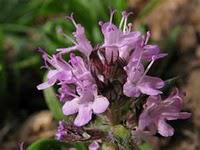 Wild Thyme (thymus polytrichus)
Wild Thyme (thymus polytrichus)Also Known As: No other common names
Uses: Drink as a tea for headaches and mild pain relief. It is also thought that a tea made from wild thyme can prevent nightmares. Take as a tincture for congested chests. A strong infusion of this herb will help ease flatulence and other digestive complaints.
Part Used: Flowering herb.
Taken As: Tincture, tea, infusion
Harvested: When the flowrs are in full bloom-from May to October. If drying , toward the end of summer
Shelf Life: 1-3 years
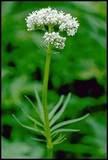 Valerian (valeriana officinalis)
Valerian (valeriana officinalis)Also Known As: All-heal, cat's valerian, garden heliotrope
Uses: Make into a tea or chew the dried root as a sedative to ease insomnia and help with the relief of stress and anxiety. Regular use of the tea also helps to ease irritable bowel syndrome. The herb has strong antispasmodic properties that help alleviate menstrual cramps and other stomach complaints.
Part Used: Leaves, roots
Taken As: Tea, tincture, dried root.
Harvested: Leaves and roots in fall
Shelf Life: 1-3 years
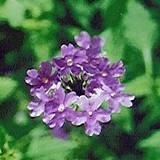 Vervain (verbena officinalis)
Vervain (verbena officinalis)Also Known As: Verbena, holy herb
Uses: Taken as a tea or dcoction, vervain can help with insomnia, treat anxiety, aid lactation in mothers, and act as a good mouthwash to help treat infected gums. Vervain is also one of the original 12 of the Bach Flower Remedies.
Part Used: Leaves, flowers and stems
Taken As: Tea, decoction
Harvested: Before flowering, dry promptly
Shelf Life: 1-3 years
****Warning! Should not be taken during pregnancy!****
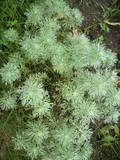 Wormwood (artemisia absinthium)
Wormwood (artemisia absinthium)Also Known As: Absinthe, old woman
Uses: Taken as an infusion, it is a powerful, bitter, digestive stimulant and a treatment for intestinal worms. Can be applied as a poultice to ease bruises, skin inflammations, and acne
Part Used: Flowers, leaves
Taken As: Infusion, tincture, poultice
Harvested: Flowers in August and September. Strip leaves and flowers from stem before drying
Shelf Life: 1-3 years
*****Warning! Should not be used during pregnancy!*****
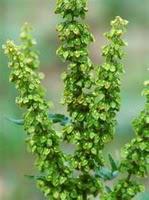 Yellow Dock (rumex crispus)
Yellow Dock (rumex crispus)Also Known As: Curled dock, narrow-leafed dock, common weed
Uses: As a tea it can help hemorrhoids and act as a laxative. It can be used in a poultice to treat ringworm. Young leaves can be eaten in a salad, like spinach, and are a good source of the vitamins A and C.
Part Used: Leaves and roots
Taken As: Tea, decoction, poultice. The leaves can be eaten raw as part of a salad.
Harvested: The leaves and roots should be gathered in early spring, the year after planting
Shelf Life: 1-3 years


